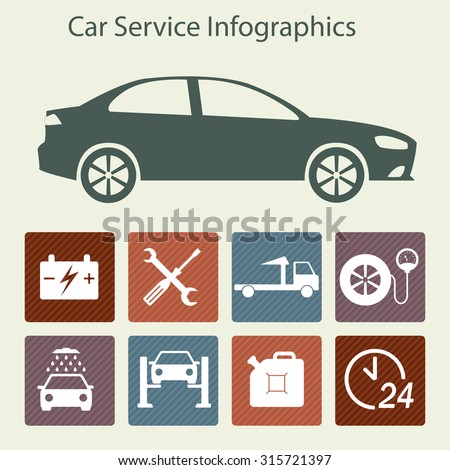When you're behind the wheel, those glowing warning lights on your dashboard can be a little bit complicated. Do https://cesarysnga.blogofchange.com/30468221/the-definitive-handbook-for-vehicle-explaining-products-crucial-expertise-for-newbies understand what they're attempting to tell you concerning your auto's health? Understanding the significance of these lights is essential for your safety and security and the durability of your car. So, the following time one of those lights appears, would not you wish to decipher its message accurately and take the essential steps to resolve it?
Common Caution Lighting and Interpretations
Identify typical caution lights in your automobile and recognize their meanings to ensure safe driving.
The most common caution lights consist of the check engine light, which signals concerns with the engine or exhausts system. If this light begins, it's crucial to have your vehicle examined promptly.
The oil pressure cautioning light indicates low oil pressure, calling for instant focus to stop engine damages.
https://ecu-tuning-near-me17395.blogsidea.com/36190496/the-ultimate-overview-to-car-outlining-products-what-every-novice-needs-to-know flashing battery light could suggest a defective billing system, possibly leaving you stranded otherwise addressed.
The tire stress monitoring system (TPMS) light alerts you to reduced tire pressure, impacting lorry security and gas efficiency. Ignoring this might result in risky driving conditions.
The abdominal light shows an issue with the anti-lock braking system, jeopardizing your ability to stop quickly in emergency situations.
Last but not least, the coolant temperature warning light warns of engine getting too hot, which can result in extreme damages if not solved quickly.
Recognizing these common warning lights will aid you attend to problems promptly and maintain safe driving problems.
Relevance of Prompt Focus
Understanding the usual caution lights in your car is just the primary step; the value of without delay addressing these cautions can't be stressed enough to guarantee your safety and security when traveling.
When a caution light brightens on your dashboard, it's your car's method of connecting a potential concern that requires attention. Disregarding these cautions can cause a lot more severe issues in the future, endangering your security and possibly costing you more in repairs.
Motivate focus to warning lights can prevent malfunctions and crashes. For example, a flashing check engine light might suggest a misfire that, if left unattended, might cause damage to the catalytic converter. Addressing find out here now without delay can conserve you from a pricey fixing.
In a similar way, a brake system cautioning light might indicate reduced brake liquid or worn brake pads, important components for your safety when driving.
DIY Troubleshooting Tips
If you notice a caution light on your dashboard, there are a few DIY fixing tips you can try prior to looking for professional help.
The primary step is to consult your cars and truck's manual to understand what the particular caution light shows. In some cases the concern can be as easy as a loose gas cap triggering the check engine light. Tightening the gas cap might solve the issue.
Another common problem is a reduced battery, which can activate different alerting lights. Checking the battery links for corrosion and guaranteeing they're secure might fix the trouble.
If a warning light continues, you can try resetting it by separating the cars and truck's battery for a couple of minutes and afterwards reconnecting it. In addition, examining your automobile's fluid degrees, such as oil, coolant, and brake liquid, can aid repair alerting lights related to these systems.
Final thought
To conclude, comprehending your vehicle's warning lights is necessary for keeping your automobile running smoothly and safely. By without delay attending to these signals and understanding what they suggest, you can stay clear of expensive repairs and potential failures.
Keep in mind to consult your automobile's manual for particular details on each alerting light and do something about it as necessary to ensure a trouble-free driving experience.
Keep informed, remain safe when traveling!
